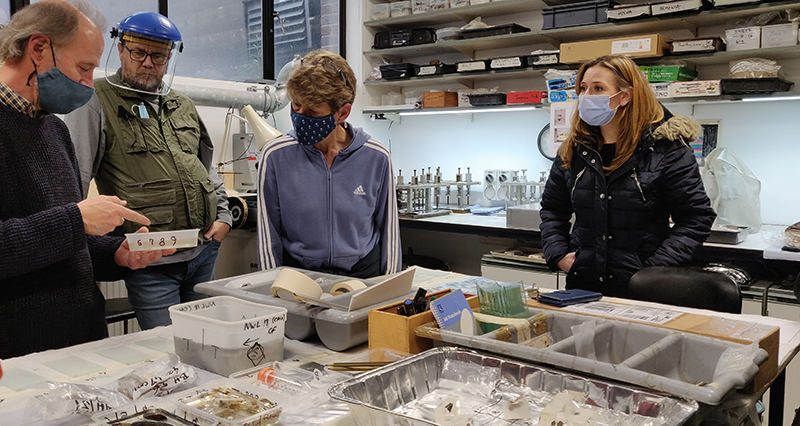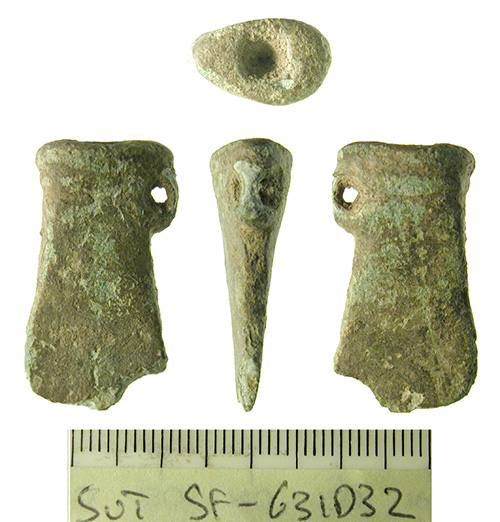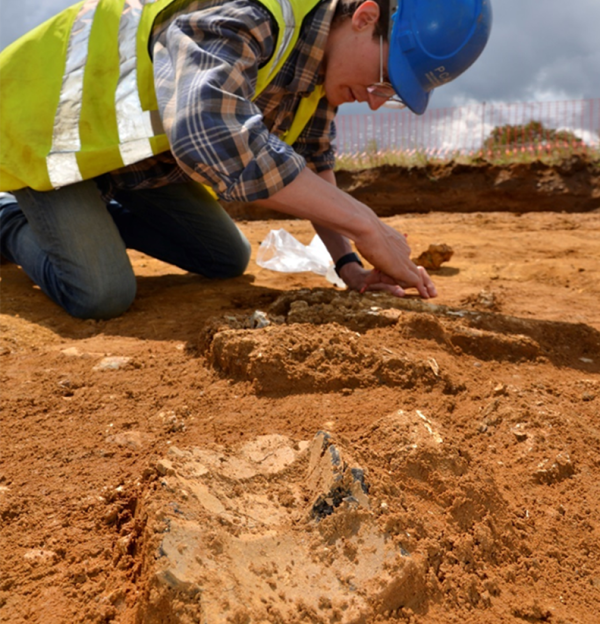
Archaeology News in Suffolk
A collection of archaeological news, projects and events in Suffolk from Suffolk County Council Archaeological Service
Welcome to our e-newsletter for January 2022
We are recruiting! Job Vacancy: Senior Archaeological Officer - Planning (Permanent)
The role will be to provide professional archaeological advice as part of the planning process, including large-scale developments and infrastructure schemes, to protect and promote Suffolk’s archaeological heritage while supporting sustainable development.
For more info and to apply visit the Suffolk Jobs website. Apply by: 30 January 2022
Required: a degree in archaeology or equivalent relevant experience and an excellent understanding of British archaeology, fieldwork techniques and how archaeology is managed in the planning system.
Featured Projects

Image: Volunteers processing environmental samples to extract finds or ecofacts.
Rendlesham Revealed: Anglo-Saxon Life in South-East Suffolk
Behind the Scenes: Post-Excavation Processing
Having finished the first season of excavations at Rendlesham last summer, our volunteers have started the post-excavation work on the excavated material at the Cotswold Archaeology warehouse in Needham Market, as part of our community archaeology project Rendlesham Revealed.
The post-excavation process involves several different tasks, which our volunteers have been undertaking since November. This includes, washing and marking the finds, processing the soil samples and recording and packaging the Registered Artefacts.
The post-excavation phase almost complete and next steps will involve sending the finds and flots from the soil samples to specialists for assessment
The next season of archaeological fieldwork will take place in Summer 2022 and local people will again be able to volunteer. This will be advertised in the Archaeology News in Suffolk e-newsletter nearer the time.
Find out more about the excavations and other fieldwork taking place as part of the Rendlesham Revealed project in the "Rendlesham Community Fieldwork" section on our website

Image: a soil sample after being processed into a thin section and analysed through a digital microscope.
In the Geoarchaeology Lab at Cambridge University
Last summer, volunteers carried out a geoarchaeology survey at Rendlesham, to collect soil samples from an area in the valley by the River Deben. Additional soil samples were also taken from some of the archaeological features during the excavations at Rendlesham in September.
But what happened to the soil samples after they had been collected?
In November, we were joined by volunteers from Suffolk Mind to visit Professor Charly French and Dr Tonko Rajkovaca at the McDonald Institute for Archaeological Research, University of Cambridge to find out more. We learnt how the samples were prepared into "thin sections" and analysed in the lab with polarised microscopes.
Watch this video by Professor Charles French for a tour of the lab and to find out about how “thin section” soil samples are made

Finds Recording in Suffolk

Image: A Late Iron Age to Roman miniature socketed axe
Featured Find - Miniature Socketed Axe, Sutton
This complete miniature socketed axe was recovered by a metal detector user in 2009 near Sutton. There have been several discoveries across Suffolk of miniature axes over the years and this is a fantastic example. It measure 3cm in length, 1.6cm in width at blade end and only weighs 13.11g.
But what were they used for? These miniatures usually date to late Iron Age/Roman period, and often relate to weaponry, although there are some examples of agricultural tools as well. There is some debate over their use but are usually associated with religious or ritual activities. Or are they simply toys for children?
If you have recently found an archaeological object in Suffolk which you'd like identified and recorded, our Finds Recording Team can help. Find out more about Finds Recording here.
Archaeology in Development

Image: excavating a Bronze Age burial ©Pre-Construct Archaeology
Discovering Prehistoric Woolpit
A site with prehistoric remains has been excavated on the edge of Woolpit ahead of a housing development. The earliest finds included struck flint tools, flint-working waste and ‘Mildenhall Ware’ pottery sherds, broadly dating to the Early Neolithic period.
The most intriguing discovery was a Bronze Age burial of an adult man, perhaps 45 years old or more. Buried with him was a decorated pottery ‘Beaker’ or drinking cup. What is quite unusual, is that the burial was surrounded by a sub-square ditched enclosure.
The Crick Institute will be carrying out DNA analysis of the human remains as part of their research into Ancient DNA.
Suffolk County Council’s Archaeology Service oversaw the excavation, which was carried out by Pre-Construct Archaeology, with RPS Group acting as archaeological consultants, ahead of development by David Wilson Homes.
Thank you for joining our e-newsletter, for those who are new, here's a brief summary of what we do.
We are the main provider of archaeological advice in Suffolk and to promote the conservation, enhancement and understanding of Suffolk's distinctive historic environment, we:
- maintain a record of archaeology and heritage assets, the Historic Environment Record
- provide advice to planners, developers and farmers
- identify and record finds made by members of the public
- curate an archive for fieldwork projects carried out in the county
- publish the results of fieldwork and other research into Suffolk's past